30 Sep Prototyping of story wall formats
As with all agile practices even well established techniques are ripe for do, learn and adapt.
We thought it useful to start a post to collect and share story wall ideas and formats. There is lots we have come across and even more we are still to see and use. Please feel free to add your story to this blog.
A recent story of a radical new wall format we have tried:
We have a client with a large scrum team 25+people. Not ideal due to size but unavoidable just for the moment. The team has been struggling to get traction and uplift velocity after 6 new people coming on board.
For the last release they have been using the common story wall format of basic analysis, dev, test vertical swim lanes for its daily standup.
The Wagile Wall
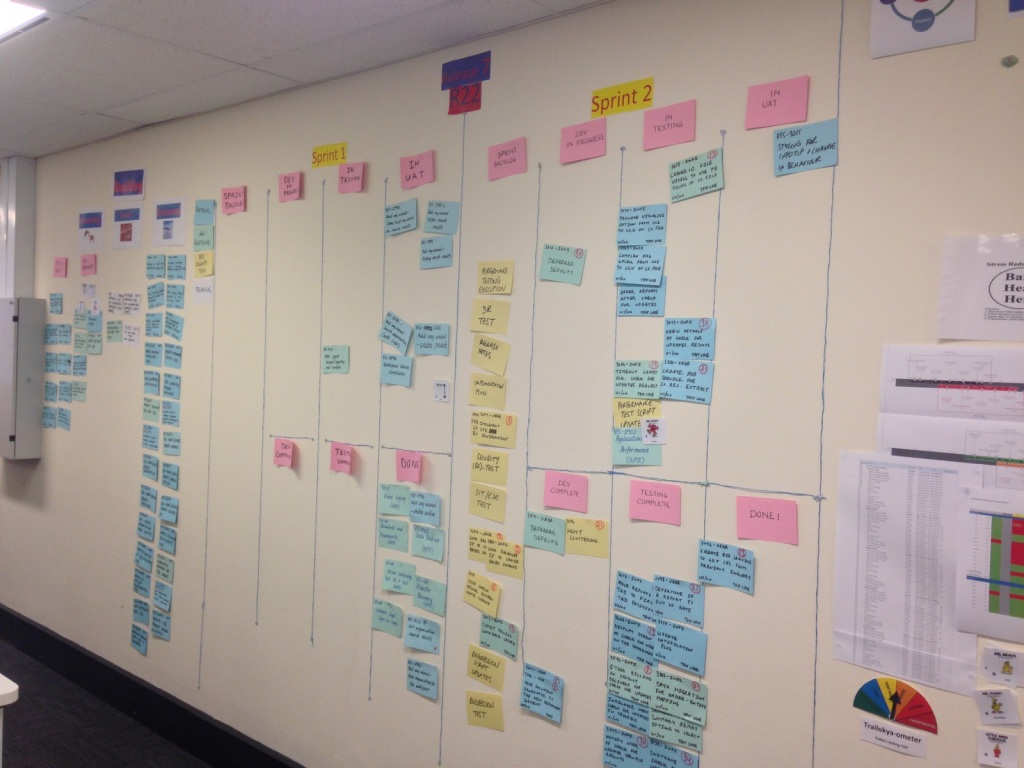
Unfortunately the stand up has become ineffective as the team struggled to use the wall to identify work and roadblocks. Only some people at stand up ended talking and most said nothing. If we changed the stand up format so that we did a round robin of everyone using the format of what I did yesterday, what I will do today, what I need, we found that it became a status update and lost connectivity of the story and hence the focus on the work to be done.
All in all things where sick. Team velocity low, team not working as a team, focus on work low and visibility of obstacles faced not clear.
We carried out a quick retro post stand up and concluded two things we needed to get the team focused back on flow rather the just getting to done. Secondly we needed to give visibility of the work focus for each person. Ie who is busy, who is not and what is each person working on.
We went back to kanban basics and restructured the wall to allow each person to pull in work.
We created a grid system on the wall.
The GRID
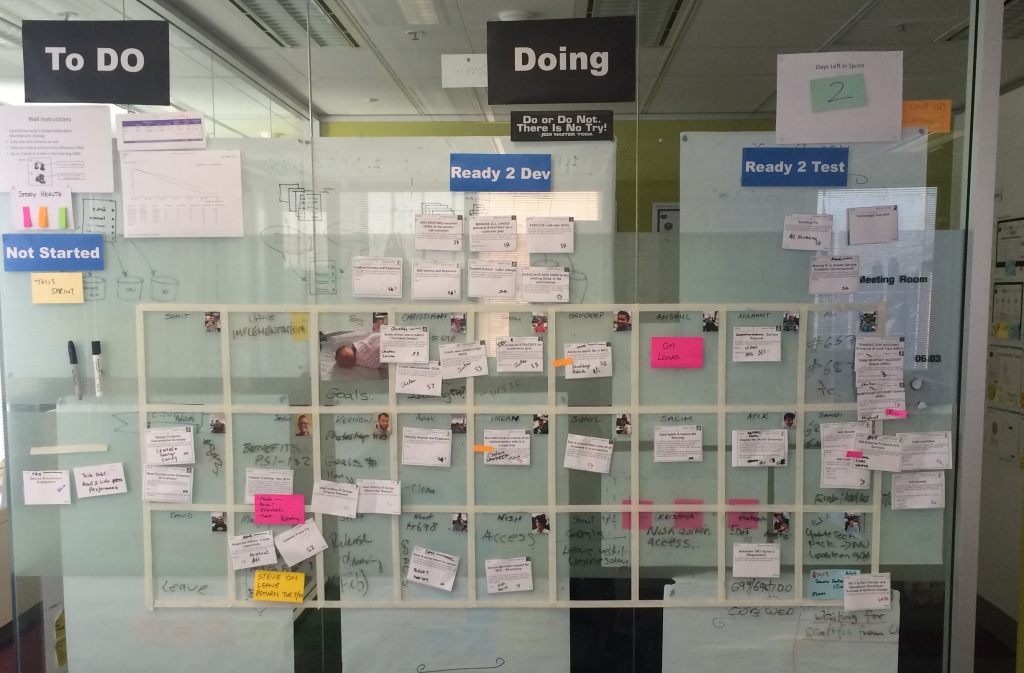
At the top of the wall We have three ready parking lots one for elaboration, one for build and the last for quality. Each cell on the grid is for a person so it is easy to see who is working on what. To improve focus we have limited each persons box to only 2 stories Max. Stories will jump from box to box depending on who is working on the story. Principle here is no issue with story jumping around just so long as there is no road blocks- we have trust that people are doing what needs to be done and it will take as long as it needs to.
Story’s roughly flow from left to right on wall so you can see when things are bunching up in Elaboration, building or finalising stories into “Done”. One of the team members even had a baby in the last sprint so she made it up there too :).
This proved pretty effective. Team has a much clearer understanding of who is doing what, and we can now see who is needing support by the simple use of red post it notes when things are blocked. Individuals are empowered to get on with the story they have and ask for help if needed.
These are just the latest changes in one of the teams we are working with but there are lots of other formats out there that we have come across. Here are a few more for ideas:
The Release Radar
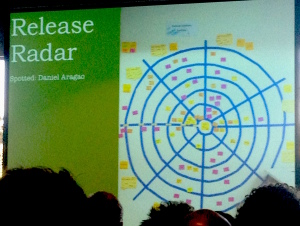
Story’s start on the outside then move to the centre target. Yellow are stories/features, and red risks. Each pie slice represents a delivery team.
Value Chain Prioritisation
The value chain steps are on yellow cards across the top – in this case 6 key steps of a business compliance process. Features are the green cards, and child stories the white cards. Things above the blue line are planned for the next release, things below are in the backlog. A later tweak of this wall includes coloured dots on each story to represent Must, Could, Should, This was nice as it helped focus “musts” coming above the line.
PMO Portfolio Wall
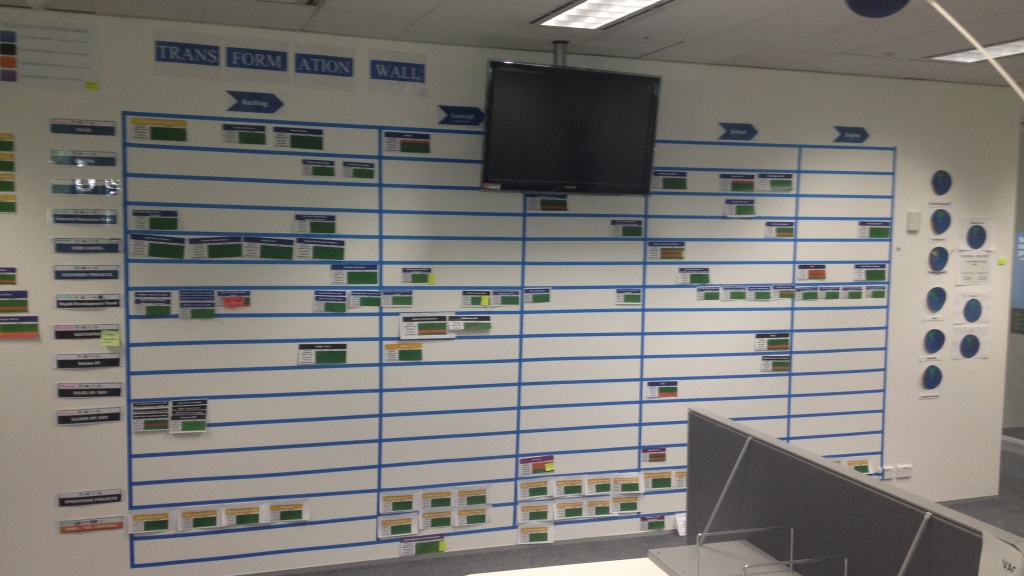
This one is a wall used to provide visibility across a $50Million+ portfolio. The stand up was held for anyone to attend once a week. The portfolio was a mix of waterfall and Agile projects so lots of traditional elements still here. The PMO phases are across the top, the business aligned delivery teams down the left and the cards on the wall are Minimal Viable Products ( i.e. often equivalent to a project). The big cards = big cost MVP, the little cards little cost MVP. The stand up was run as a bit of status update where the delivery lead provided an update and called out key risks, blockers or dependencies.
Update: Dec 2014.
After a rather inspirational chat with a colleague about flow theory over a beer we decided we could again adapt our wall to improve things. The team has been using the grid wall for an entire release (about 3mths) and we have now fixed the team size issue. Our new goal is how do we reduce the cycle time of our stories. Last release we found the burn down looked a little too waterfall for our liking. So we have created a new format that allows the team to still Scrum around a story but have the wall providing much clearer visibility of cycle time. The idea being that anything that gets too old needs to have the focus of everyone on it to knock it off.
Aged Deliverables Story Wall
Update: Jan 2015
SAFe is all the craze at the moment so here is one of our clients Release Train walls. Delivery Squads are the horizontal. Green cards are Features, Orange cards are key risks.
SAFe Release Wall
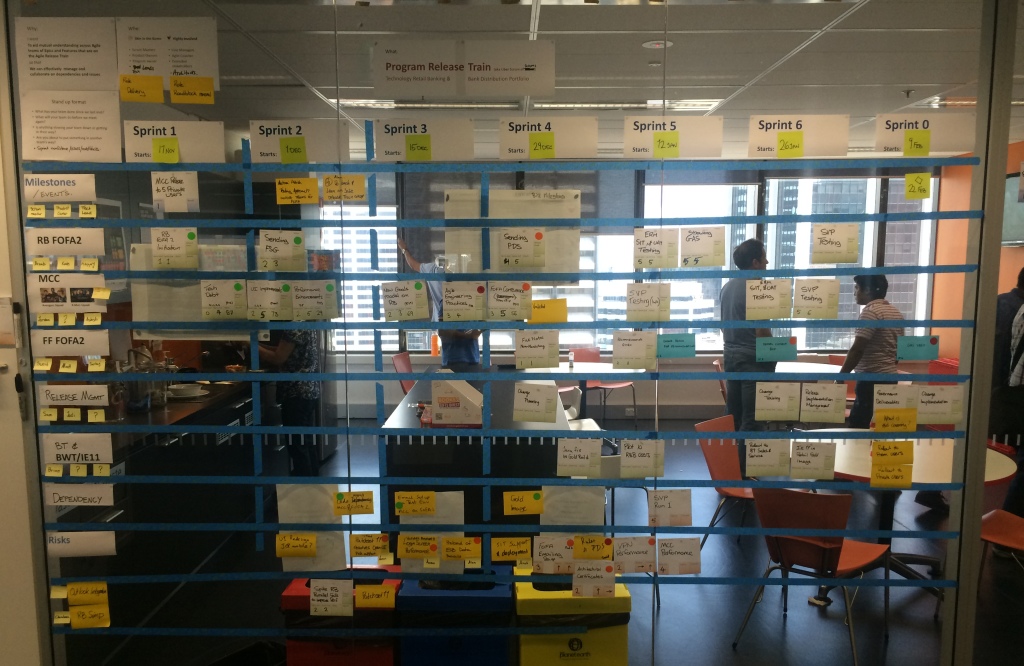
UPDATE 24/4/2015
Do, learn, adapt can successfully be applied everywhere. One of our clients has recently refined their wall to visualise the energy flow within their team. the latest incarnation uses a left column for “todo” work of the sprint, then a hexagon for the in progress work and a right hand column for “done” work.
The hexagon has the various kanban states of the team as stories move from the centre to extreme edges to represent where the focus is on the story from the team (eg in testing).
I love this format, as this rapidly shows where teams energy is or needs to be focused to maximise thruput and teamwork plus it really emphases the idea of teamwork and
removes the visualisation of traditional silos.
A photo of their Hexagon Energy wall is below. Credit to Jordan C for this inspired design.



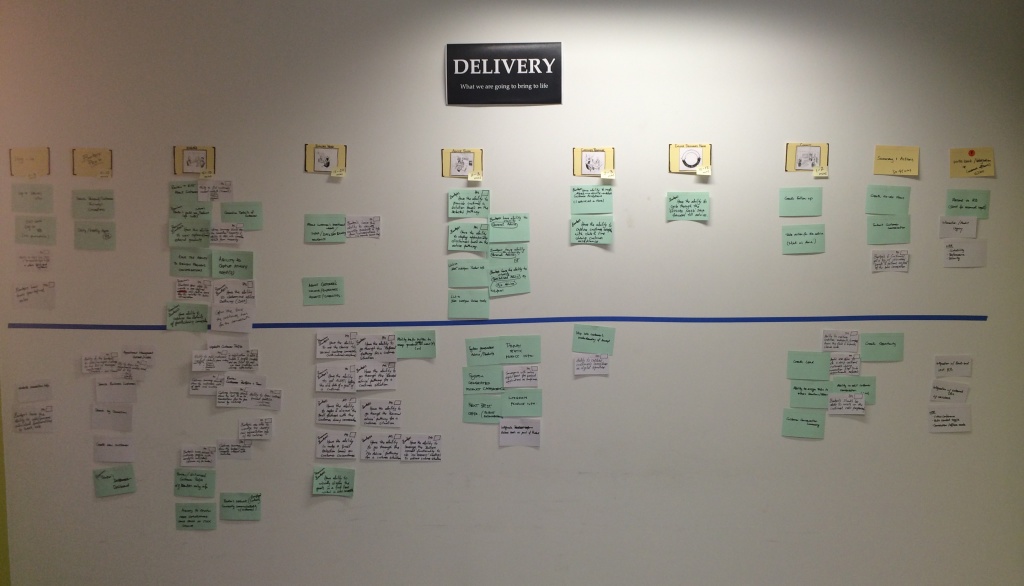
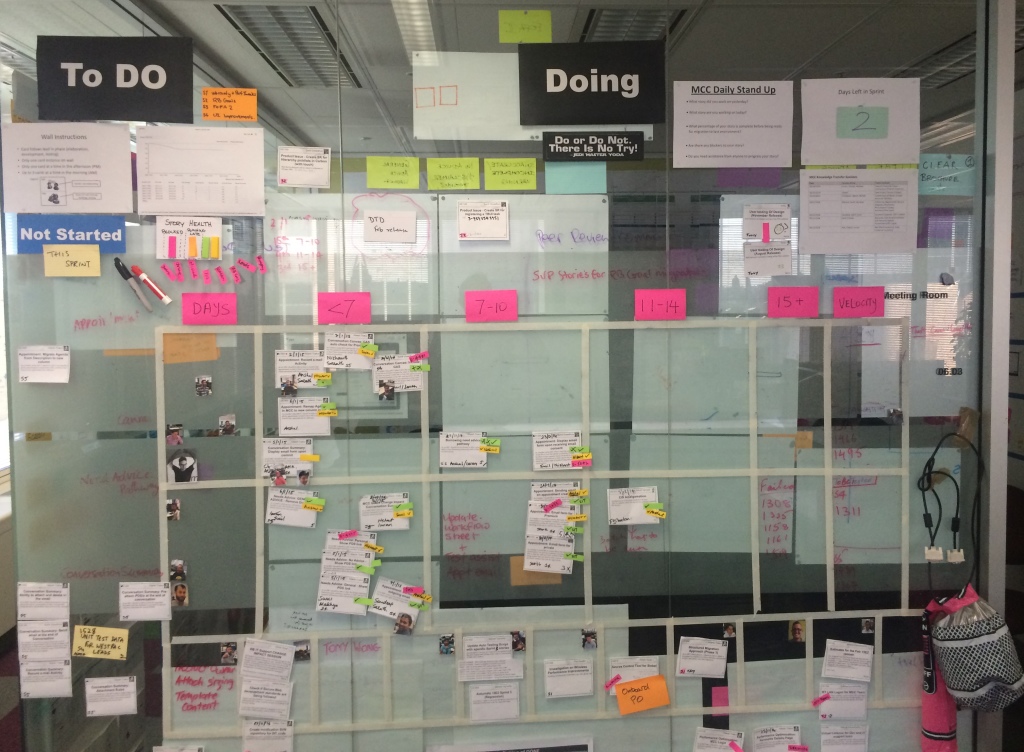

No Comments